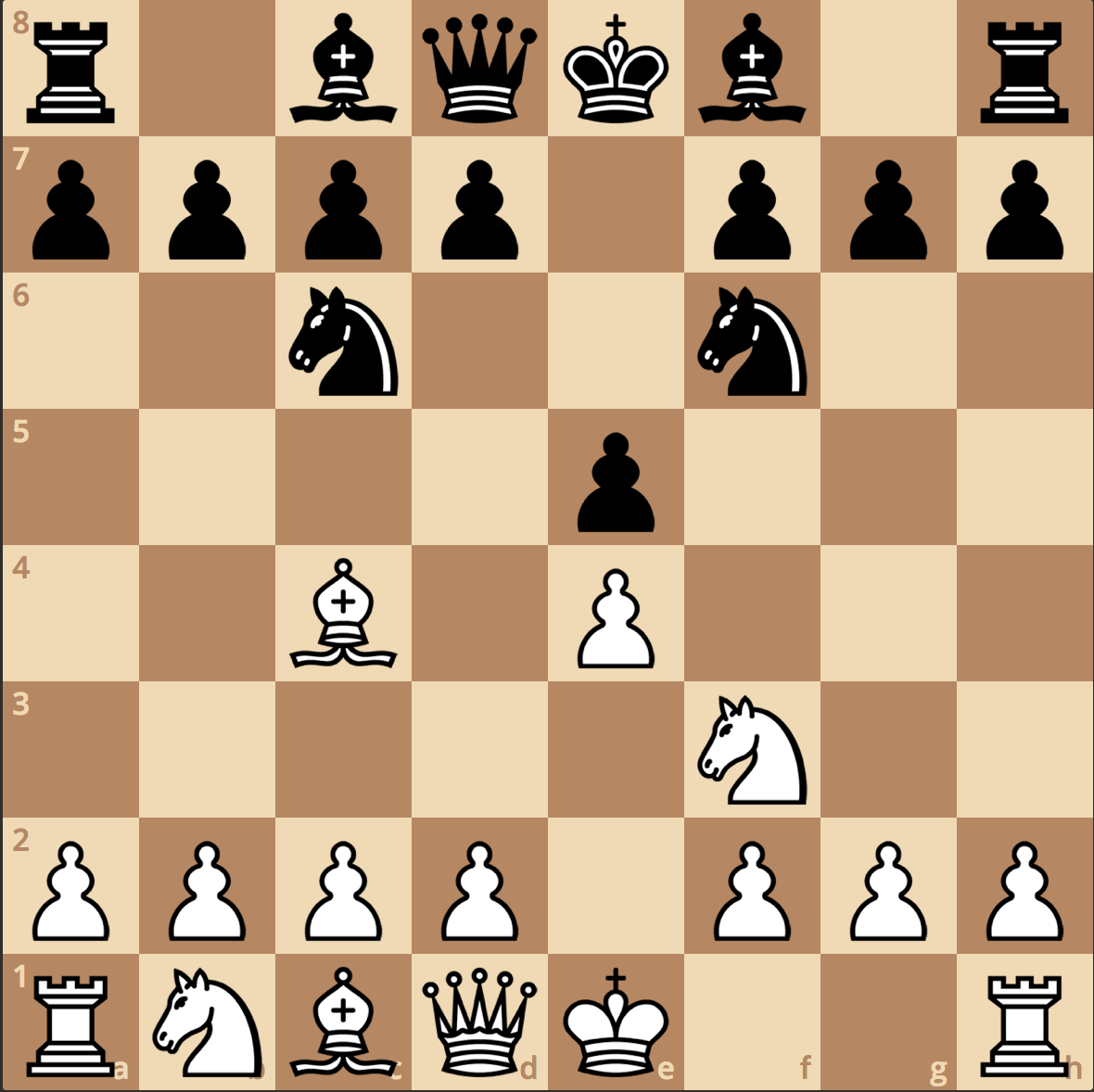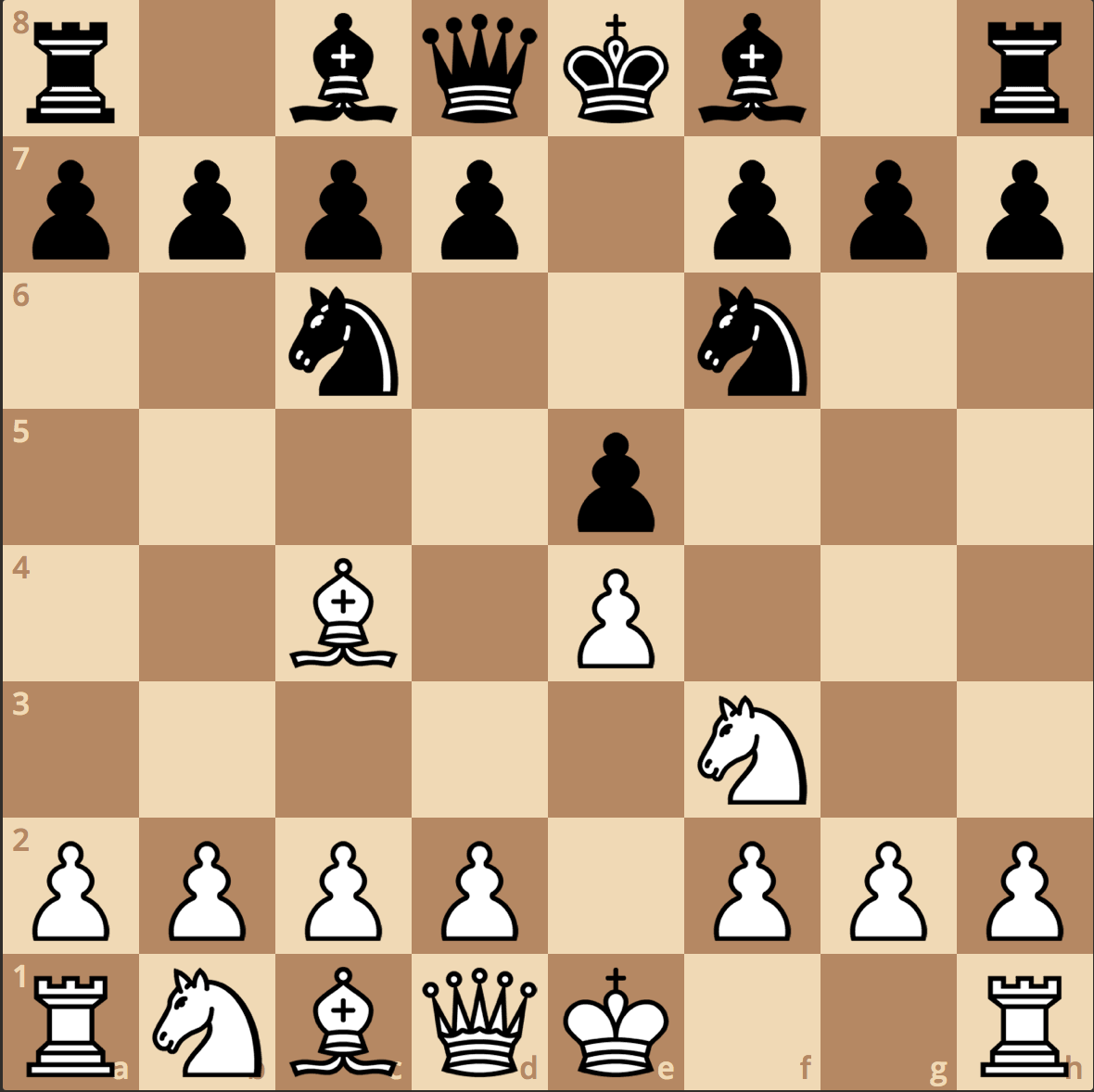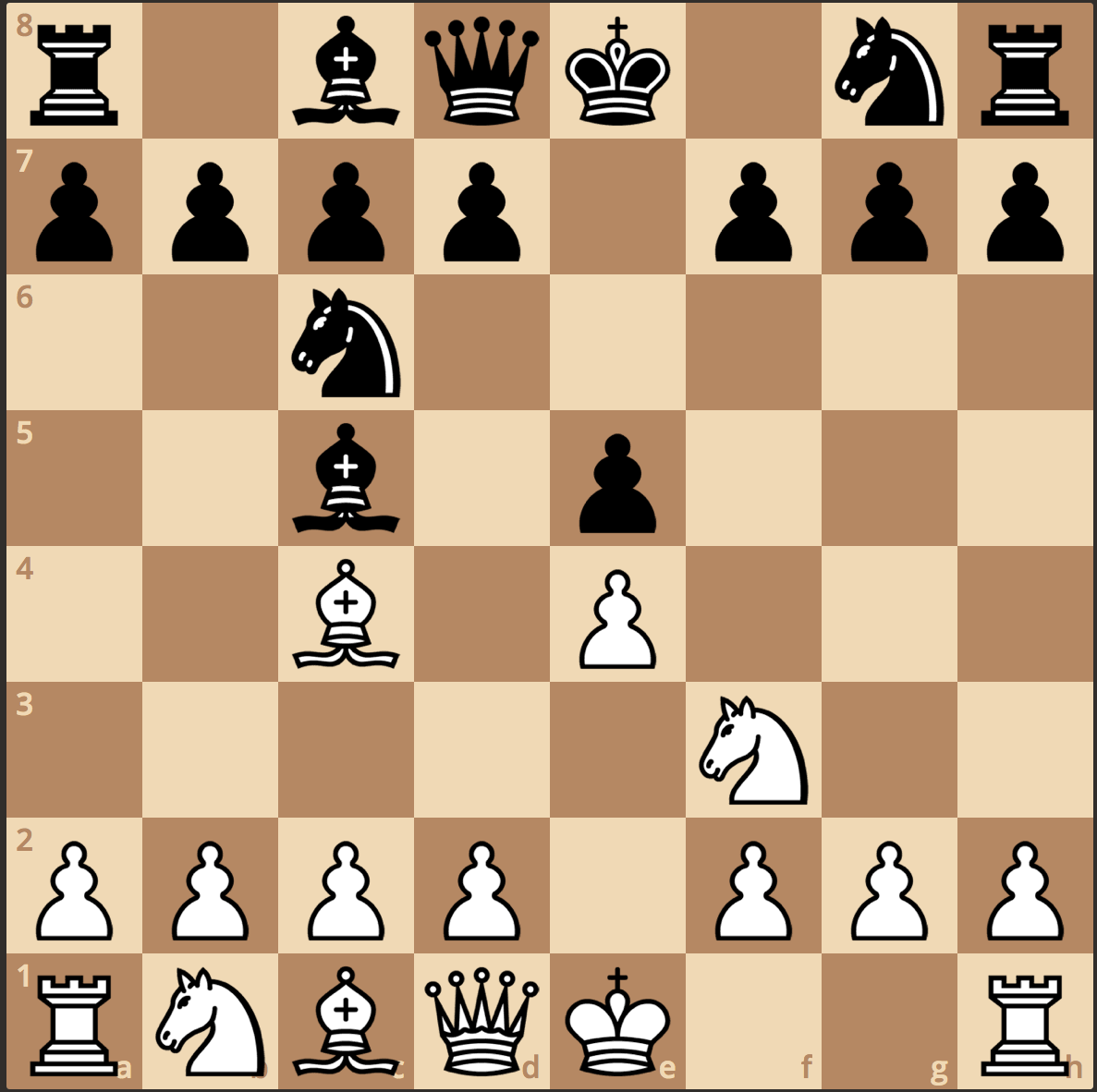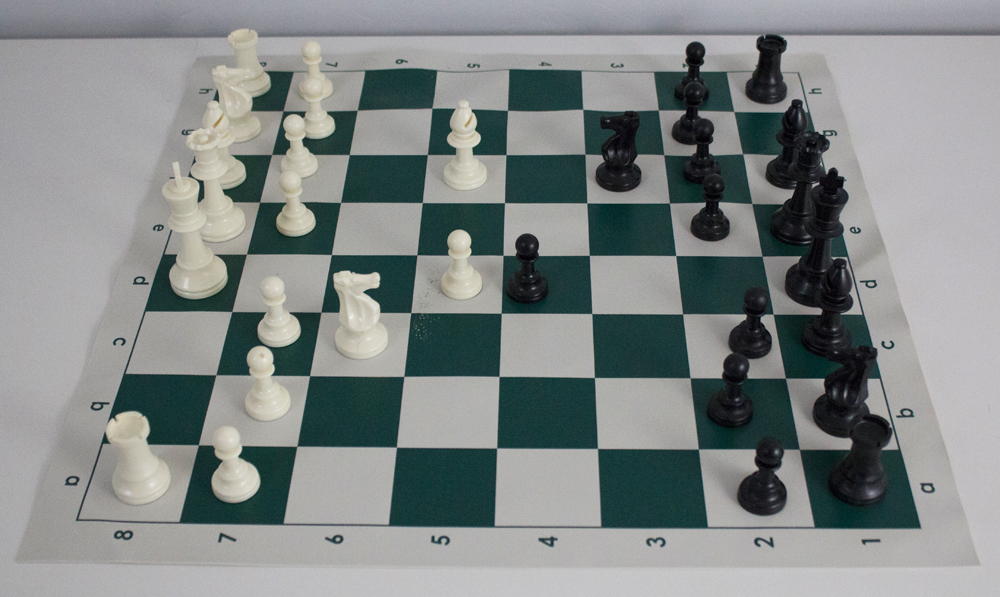Hello readers! Brian here, and today we are going to talk about The Italian Game. This is a fairly common opening that many players use. Nowadays, many players rating from 900 to 1300 play this opening because it is simple, unlike the one discussed in my previous post on The Sicilian Defense. However, grandmasters rarely play this opening because it is very simple and doesn’t have a lot of main lines compared to some other openings like the English, and the Dutch Defence. But even so, some grandmasters such as Magnus Carlsen and Wei Yi still play it.

The Italian Game
The game starts as follows: 1.e4 e5 2.Nf3 Nc6 3.Bc4
- The Italian Game is one of the oldest openings recorded, dating back to the 15th or 16th century
- The parent of this opening is open, similar to the Ruy Lopez opening because the board results in having a lot of space and attacking opportunities
- The point of White’s first three moves is to develop the minor pieces and prepare to castle. This is a basic fundamental of almost all chess games.
- The two main variations of The Italian Game are the Two Knights Defense and the Giuoco Piano

The Two Knights Defense
- It goes like this: 1.e4 e5 2.Nf3 Nc6 3.Bc4 Nf6
- The Two Knights Defense was developed in the later part of the 16th century
- It was first recorded by Giulio Cesare Polerio, a chess player and theoretician
- Most grandmasters today play 3..Bc5 instead of Nf6 because it is more theoretical meaning that it has been studied more, and leads to the Giuoco Piano.
- My thoughts: I think this is a very safe approach to the Italian Game because it creates counterplay against the e4 pawn. Though White can try the “Fried Liver Attack,” which is 4. Ng5, Black can play a timely d5, and break open the position.

The Giuoco Piano
The moves are: 1.e4 e5 2.Nf3 Nc6 3.Bc4 Bc5
- The Giuoco Piano originated in the 16th century
- A Portuguese chess player named Pedro Damiano played it at the later half of the 16th century, and Gioachino Greco, one of the best Italian Chess players ever, also played it at the beginning of the 17th century.
- My thoughts: I think this is a pretty good position for both sides, Black having the c5 bishop, and White having the bishop on c4, thus preventing d4 for White, and d5 for Black.
- Pronounced: gee-o-co piano
My Experience Using the Giuoco Piano and The Two Knights Defense
[iframe src=”http://www.chess.com/emboard?id=3080114″ width=”565″ height=”290″ style=”float:middle”]
I started this game with the Scotch Game, thinking it would progress into a very open game. My opponent decided to play the move 4.Nf6, transposing this into an Italian Two Knights variation. Though this game seemed fairly simple, there were a lot of times when my opponent could’ve jumped on another line, and this game would’ve been somewhere else. Here, I learned that in the game of chess, you have to be able to look very deep. This means that you have to predict moves ahead.
[iframe src=”http://www.chess.com/emboard?id=3080124″ width=”565″ height=”290″ style=”float:middle”]
The first five moves seemed pretty normal, showing the Giuoco Piano. When Black decided to check on move 6, it gave me a “tempo” and more attacking opportunities. “Tempo” in chess is basically “time.” When you have time in chess, it is always an advantage. I mean that you can stall time on the board, making more moves. For defense, if you have time, you can create counter attacking chances. When you want to attack, you can use time to rally the pieces into their best squares. I learned from this game that you have to be aggressive in the game of chess. The best defense is offense.
That’s all for this post, stay tuned for my next post on The Kingside and Queenside Fianchetto. ‘Till next time, goodbye.





